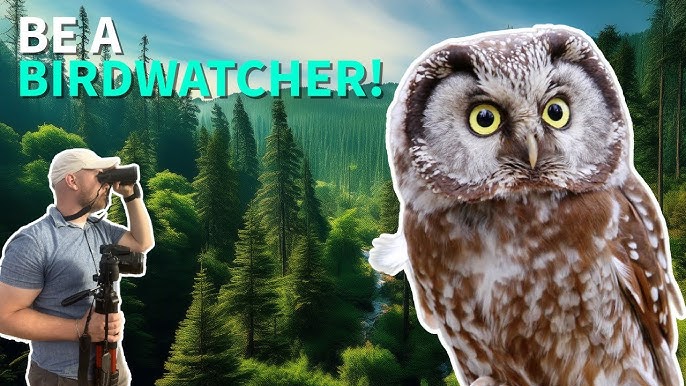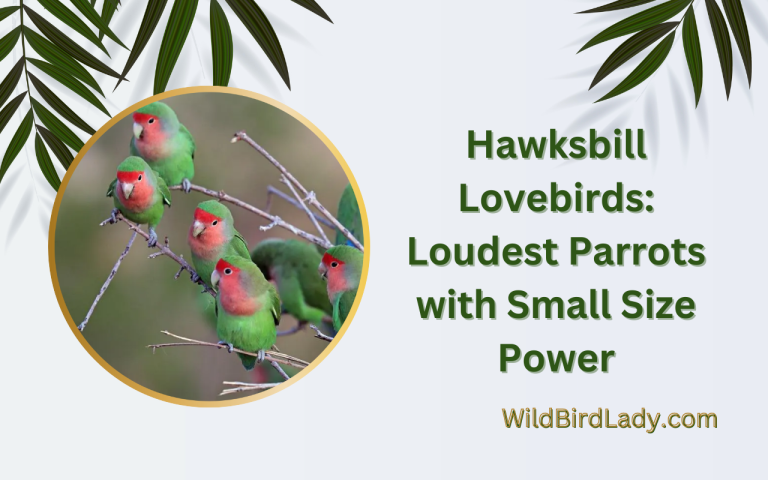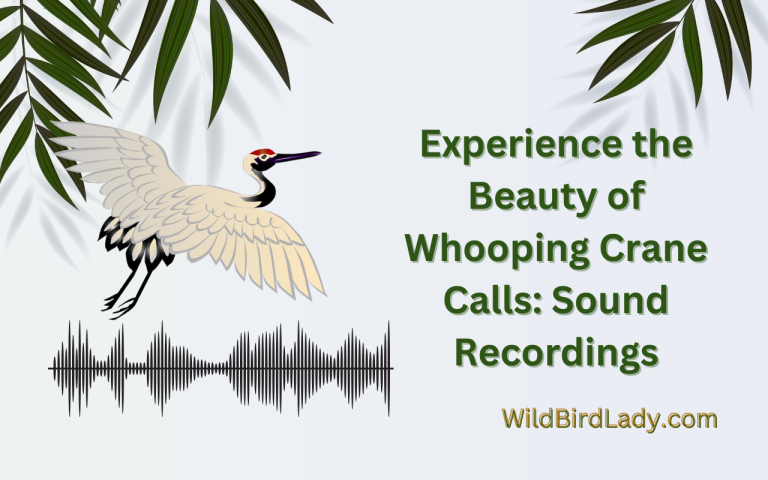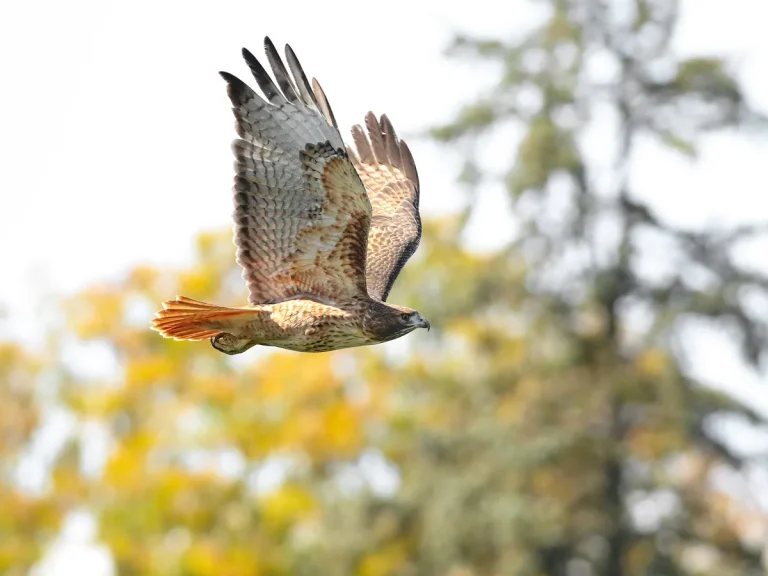Birdwatching 101: The Ultimate Guide To Get Started
Birdwatching is the activity of observing birds in their natural habitat. To get started, you’ll need binoculars, a field guide, and a good spot for birdwatching like a nearby park or nature reserve.
Birdwatching, often called birding, is a popular hobby millions of people enjoy worldwide. The practice involves observing and identifying birds in their natural habitat, whether in a local park or a remote corner of the world. Birdwatchers use a range of tools to assist in identifying different bird species, such as binoculars and field guides.
Some birdwatchers keep a list of all the birds they have seen throughout their birding experiences. To get started with birdwatching, one needs to find a good spot to watch birds and be patient while observing them. It’s a fascinating and rewarding hobby that can provide hours of enjoyment for people of all ages and skill levels.
Factoids
- 🦅 Birdwatching, also known as birding, is the activity of observing birds in their natural habitat.
- 🌳 To get started, you’ll need binoculars, a field guide, and a good spot like a nearby park or nature reserve.
- 🌍 Birdwatching offers numerous benefits, including connecting with nature, learning about different bird species, and exploring new environments.
- 🐦 Before starting, it’s important to understand the different types of birds you might encounter, such as songbirds and waterbirds.
- 🛠 Essential gears for birdwatching include binoculars, lightweight and appropriate clothing, and a binocular harness for easy access.
- 🕊 Choosing the right birdwatching spot depends on the habitat, such as woodlands, wetlands, and grasslands.
- ⏰ The best time for birdwatching is early morning or late afternoon when birds are most active and visible.
- 🔎 Important tips for a successful birdwatching trip include learning to identify birds, using binoculars and spotting scopes, and respecting nature and birds.
- 🚫 Birdwatching etiquette emphasizes avoiding disturbing birds, being aware of surroundings, and interpreting bird behaviors.
Understanding Birdwatching
What Is Birdwatching?
If you are fascinated by birds and their behaviours, then birdwatching might be your new favourite activity! Birdwatching, also known as birding, is the observation and study of birds in their natural habitats. It covers a wide range of interests, from identifying different species of birds to understanding their behavioural patterns, migratory habits, and more.
To get started, all you need is a good pair of binoculars and a field guidebook to help you identify the birds you see.
Reasons To Get Into Birdwatching
Birdwatching is an engaging hobby that offers numerous benefits, such as:
- It gives you a chance to connect with nature and appreciate its beauty.
- It presents an opportunity to learn about different bird species and their habits.
- It encourages the exploration of new environments and habitats.
- It provides a form of exercise and helps you stay active.
- It can be a great stress reliever and an excellent way to clear your mind.
Understanding Different Types Of Birds
Before you start your birdwatching journey, it’s essential to understand the different types of birds you might encounter. Here are some of the common bird types that birdwatchers look for:
- Songbirds: These birds produce a wide range of melodious calls and are usually small in size. Examples of songbirds include finches and sparrows.
- Waterbirds: These birds are commonly found near water bodies such as lakes, rivers, and oceans. Examples of waterbirds include ducks and swans.
- Raptors: These birds of prey are known for their sharp talons and beaks, which are adapted for capturing and eating other animals. Examples of raptors include eagles and hawks.
- Shorebirds: These birds are often found on the shores of oceans, bays, or estuaries. Examples of shorebirds include sandpipers and plovers.
Now that you understand birdwatching grab your binoculars and start exploring! Remember to respect birds’ habitats by not disturbing them or their surroundings to ensure they remain healthy and happy in their natural environment. Happy birdwatching!
Essential Gears Needed For Birdwatching
What Are The Essential Gears Needed For Birdwatching?
Are you planning to go birdwatching but don’t know what gear you need? Here are some must-have items that every birdwatcher should invest in before hitting the field:
Binoculars:
Binoculars are a crucial piece of equipment for birdwatchers. They enable you to see the birds from a distance without disturbing them. Here are some essential features you should look for in binoculars:
- Magnification: 8x to 10x magnification is ideal for birdwatching.
- Objective lens diameter: Larger objective lenses let more light in, making images brighter. Look for a diameter of 42 mm or more.
- Prism type: Roof prism binoculars are more compact, while porro prism binoculars offer better depth perception and image quality.
Field Guide:
Having a field guide is a must for identifying different bird species. Field guides provide detailed information on bird behaviour, habitat, calls, and migration patterns. Here’s what to look for in a good field guide:
- Quality illustrations: Clear and detailed illustrations make it easier to identify birds.
- Range maps: These indicate the geographical distribution of different bird species.
- Size and portability: A pocket-sized guide is easy to carry in the field.
Spotting Scope:
A spotting scope is a specialized telescope designed for birdwatching. It provides high magnification, making it ideal for spotting distant birds. Here’s what you should consider when choosing a spotting scope:
- Magnification: Look for a spotting scope that offers 30x to 60x magnification.
- Objective lens diameter: A larger objective lens diameter offers brighter images.
- Portability: Spotting scopes can be heavy, so look for a lightweight and easy-to-carry model.
Clothing And Footwear:
Birdwatching often involves walking through different terrains, so proper clothing and footwear are essential. Here’s what to keep in mind:
- Clothing: Wear neutral-coloured clothes that blend in with the environment. Avoid bright colours that can scare birds away. Wear layers so you can adjust according to the weather.
- Footwear: Invest in comfortable walking shoes with good traction. Waterproof shoes are ideal for wet conditions.
Camera And Binocular Harness:
If you want to capture your birdwatching experience, investing in a good camera is essential. A binocular harness will keep your binoculars safe and easily accessible. Here’s what to consider:
- Camera: Look for a camera with a high shutter speed and a telephoto lens for close-up shots.
- Binocular harness: A harness will keep your binoculars within easy reach and prevent them from bouncing around when you walk.
Investing in these essential gears allows you to enjoy a more rewarding and safe birdwatching experience. Happy birding!
How To Choose The Right Birdwatching Spot
Birdwatching is one of the most exciting hobbies to have, as it can take you to some of the most scenic places and bring you closer to nature. Have you considered trying birdwatching, but you’re unsure where to start or how to choose the right birdwatching spot?
In this section, we’ll provide you with a guide on how to choose the right birdwatching spot, including understanding the habitat, the best time for birdwatching, and online resources to find birdwatching spots.
Understanding The Habitat
The first step to choosing the perfect spot for birdwatching is to understand the habitat you’ll be looking for. Different bird species are found in different habitats, so you must know what you’re looking for. Here are some of the most common habitats for birdwatching:
- Woodlands and forests: You’ll find a variety of bird species in wooded areas. Look out for woodpeckers, nuthatches, and warblers.
- Wetlands and marshes: Wetlands and marshes are home to a wide range of waterfowl, including ducks, herons, and egrets.
- Grasslands: Grasslands are great for watching birds of prey like hawks and eagles.
Best Time For Birdwatching
When it comes to birdwatching, the best time to go is early in the morning or late in the afternoon. This is when birds are most active and visible. You’ll see a lot more birds during these times than you would in the middle of the day when they tend to be less active.
Online Resources To Find Birdwatching Spots
Luckily, with the rise of technology, many online resources are available to help you find the best birdwatching spots. Here are some websites to get you started:
- Ebird: This website provides a checklist of birds you might expect to see at different birdwatching spots.
- Alltrails: This app provides you with information on trails near your location that are good for birdwatching.
- Audubon: This website features a map of important bird areas that are good for birdwatching.
With these resources, you can find the perfect spot for birdwatching, whether you’re looking for a peaceful woodland trail or a bustling wetland full of waterfowl.
If you’re thinking about trying out birdwatching, understanding the habitat, knowing the best time to go, and using online resources to find the right spot are all important factors to consider. With these tips in mind, you’ll be well on your way to discovering the joys of birdwatching.
Tips For A Successful Birdwatching Trip
Birdwatching is a fascinating hobby that allows you to explore nature while observing some of the world’s most beautiful feathered creatures. It’s an exciting and rewarding experience that anyone can enjoy regardless of their level of expertise. Below are some helpful tips that will ensure a successful birdwatching trip:
Learn To Identify Birds
Identifying birds is the foundation of successful birdwatching. Knowing the distinct features of each bird, such as their size, shape, plumage, and behaviour, helps you spot and differentiate them easily. You can use field guides, birding apps, and online resources to learn about different bird species and their habitats.
Learning bird calls and songs is also essential in identifying the birds you hear but can’t necessarily see.
Be Patient And Attentive
Birds are easily spooked and enjoy their freedom. They fly off without warning, making it challenging to spot them. To have a successful birdwatching trip, you must be patient and attentive. Spend your time in areas that bird frequent and wait patiently for them to appear.
Keep an eye out for any movement, rustling, or chirping sounds, and always have your binoculars within reach.
Learn To Use Binoculars And Spotting Scopes
A decent pair of binoculars is essential for birdwatching. They allow you to get a closer look at birds without disturbing their natural habitat. It is also essential to learn how to use spotting scopes, which provide a more detailed view of birds.
Practice using both pieces of equipment before embarking on your birdwatching trip to avoid struggling with the control and focus in the field.
Respect Nature And Birds
One of the essential aspects of birdwatching is respecting nature and birds. Stay on marked trails to avoid disturbing birds’ natural habitat and any potential nesting or breeding sites. Avoid making loud noises, such as whistling or shouting, that can scare away birds.
Keep a safe distance from the birds to avoid causing any harm, and never try to feed or touch them.
Birdwatching is an exciting and enjoyable activity for anyone who loves nature and wildlife. By learning to identify birds, being patient and attentive, using binoculars and spotting scopes, and respecting nature and birds, you will have a successful and fulfilling birdwatching experience.
Birdwatching Etiquette And Ethics
Birdwatching is an enjoyable and rewarding activity for people of all ages. Not only do you get to spend time outdoors, but you also get to connect with nature and learn more about birds. However, it’s important to remember that birdwatching is not just about taking a quick snap of a bird and moving on.
As with any outdoor activity, following some etiquette rules is important to ensure that our feathered friends are not disturbed.
Do Not Disturb Birds
The most important rule of birdwatching is to avoid disturbing birds. The key is to find a spot where you can quietly observe birds without causing them distress. This means that you should never approach a bird too closely and always keep a safe distance.
If a bird begins to change its behaviour or becomes nervous, it’s time to back off.
Here are some tips to avoid disturbing birds:
- Never approach birds too closely.
- Avoid using flash photography or sudden movements.
- Don’t try to touch or feed birds.
Be Aware Of Your Surroundings
It’s important to be aware of your surroundings when birdwatching. This means that you should take note of any potential hazards or dangers in the area. For example, if you’re near a cliff or high drop, be careful not to get too close to the edge.
Here are some things to keep in mind:
- Stay on designated trails to avoid damaging the habitat.
- Be aware of the weather conditions and dress appropriately.
- Ensure that you have plenty of water and snacks.
Learning To Read The Behaviour Of Birds
One of the most exciting things about birdwatching is being able to observe bird behaviour. However, it’s important to understand what the birds are trying to communicate. By watching their behaviour, you can learn to read the signals that they’re sending.
Here are some behaviours to keep an eye out for:
- Birds fluff up their feathers to regulate their body temperature.
- Nesting birds carry nesting material to their nests.
- Courtship displays such as singing, dancing, or puffing up their chests.
Be Respectful Of Other Birdwatchers
Finally, it’s important to be respectful of other birdwatchers. After all, everyone is here to enjoy nature and watch birds. Try to keep your voice down and avoid making noise that could disturb birds or other birdwatchers. If you’re with a group, be sure to take turns observing the birds so that everyone has a chance to appreciate them.
Here are some tips to be respectful of other birdwatchers:
- Don’t make unnecessary noise or sudden movements.
- Share your equipment with others if needed.
- Ask before joining someone else’s observation.
Frequently Asked Questions
What Equipment Do I Need To Start Birdwatching?
You’ll need binoculars, a field guide, comfortable clothing, and footwear. A notebook to keep a journal and a camera with a zoom lens would also help you to take pictures.
Where Is The Best Place To Go Birdwatching?
The best places to birdwatch are parks, nature reserves, and wildlife refuges. Do some research and find the best local hotspots based on your location and the birds you want to see.
When Is The Best Time Of Day To Go Birdwatching?
Birds are most active during the early morning and late afternoon. You may also spot some nocturnal birds at dusk. Choose a time that works best for you and arrive early.
Can I Birdwatch Alone, Or Do I Need A Group?
It’s perfectly fine to birdwatch alone. However, joining a local birding group or club is a great way to learn from experienced birders, explore new areas, and share your birding experiences with like-minded people.
Conclusion
After going through this guide, you should understand what birdwatching is, why it is such a popular hobby and how you can get started with it. You must remember that birdwatching is an exciting hobby that is meant to be enjoyed at your own pace.
It is also important to always respect the birds and their natural habitat. With the right attitude and tools, you will be on your way to experiencing the beauty of nature while connecting with different bird species. Furthermore, you will be able to relieve stress while also getting a good workout.
Birdwatching is a multifaceted hobby that provides endless opportunities to learn, explore and appreciate our environment. So don’t wait any longer; head to your nearest park or reserve and begin your journey as a birdwatcher today!








